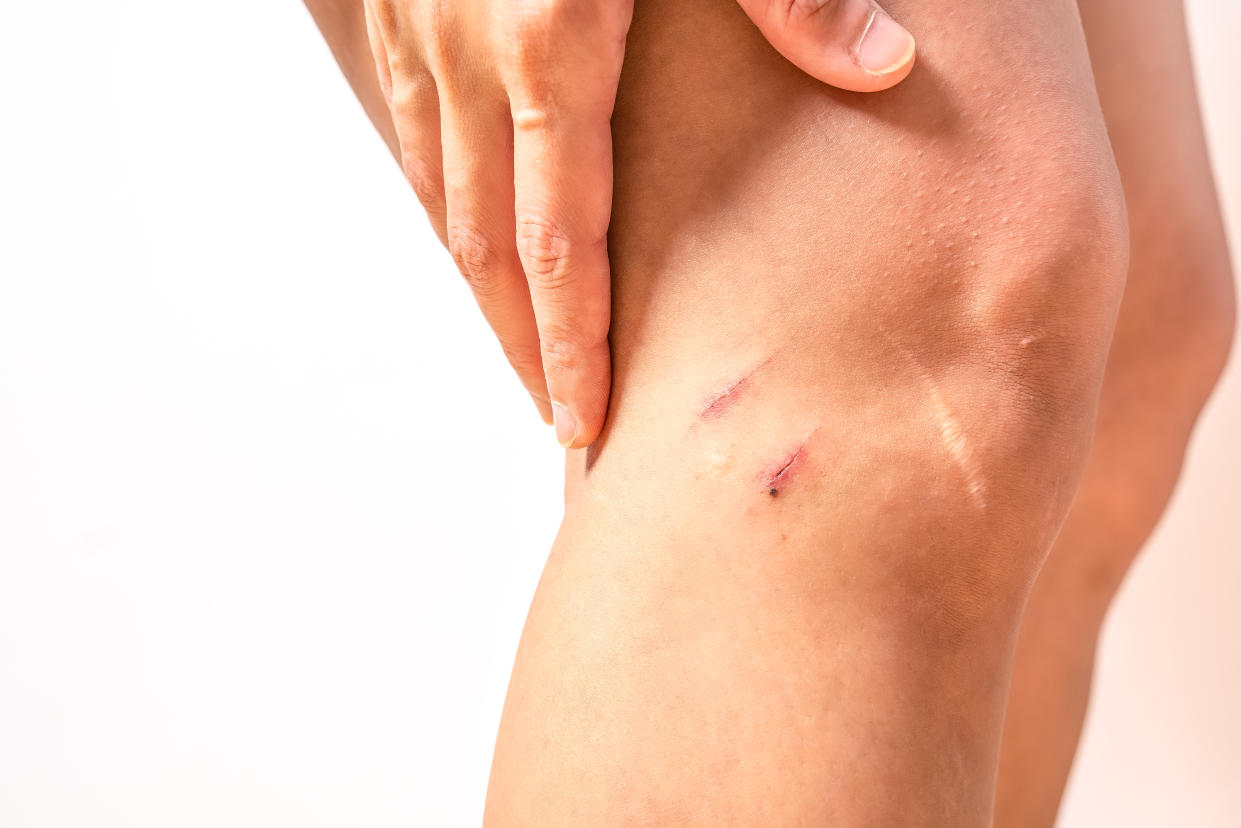Here’s how doctors want you to care for cuts and scrapes

Do you know how to properly care for cuts and scrapes? Chances are, you have an idea — but doctors have some tips for your at-home treatment plan that may help you heal. They can also help you decide when it's time to get professional help.
I just got a scrape ... it’s not so bad. What should I do?
Sometimes, scrapes happen — and the minor ones are pretty easy to manage. Dr. Brian Toy, a dermatologist at Providence Mission Hospital in Mission Viejo, Calif., tells Yahoo Life that the first thing you should do when you’ve scraped something (say, your knee after falling off your bike or your elbow while diving for a volleyball) is irrigate the wound with saline solution or water. This first step is important because it helps remove any debris that could lead to infection.
Dermatologist May Hall tells Yahoo Life that she prefers to clean these types of minor wounds with mild soap and water, and avoids using something stronger, like hydrogen peroxide, which she says can actually impede wound healing. (That's good news for people who want to avoid the harsh sting of peroxide on an open wound.)
Once the cut is clean (assuming it isn’t bleeding profusely — more on that in a moment), Hall says you can “apply a thin layer of petroleum jelly like Vaseline or Aquaphor.” Keeping a wound moist, she notes, is very important, because doing so “facilitates skin cells coming together faster and new skin forming over top of your cut or scrape.” Hall avoids antibiotic products like Neosporin, which she says many people are allergic to without knowing.
As the final first aid step, dermatologist Mary Alice Mina tells Yahoo Life that she recommends covering the wound with nonstick gauze and tape. “This should be changed at least daily, and more often if you're concerned that it's dirty,” she says.
What happens if my scrape or cut is bleeding badly?
If a wound is bleeding badly, Toy says to “hold pressure on the wound with damp gauze or a wet paper towel until the bleeding stops.” While it may be tempting to look at your wound to see if the bleeding has ceased, Toy says to be patient, as this will only delay the clotting process. Instead, “place firm pressure on the wound for a few minutes before checking,” he suggests.
Toy says that for some minor cuts (like a sliced finger, for example), you may be able to use a "butterfly closure strip," a small adhesive strip designed to hold the edges of a wound together.
However, if the bleeding doesn’t stop, you may have to take further action. A key sign that you can’t treat this injury on your own (and apologies to all those who are squeamish!) is that “yellow fat or red muscle is visible from the cut,” says Toy.
If you do have a cut that warrants extra care, Mina says it’s important to seek out medical attention right away, as “a deeper penetration wound may need sutures,” referring to a row of stitches that would close the wound and allow it to heal. If you cut your hand with something rusty or dirty, you may also need a tetanus shot, Mina says. This shot prevents tetanus infection, a potentially serious bacterial disease.
What should I have on hand to treat scrapes and cuts?
Dermatologist Hannah Kopelman says everyone should have a first aid kit in their home for when injuries come up. That kit should include:
Mild soap and water or saline solution for cleaning wounds
Ointment to prevent infection
Sterile gauze pads
Adhesive bandages in various sizes
Tweezers for removing debris
Scissors for cutting bandages or tape
Medical tape to secure pads/dressings
It’s also important to keep relevant information for emergency room and urgent care services on hand so that you can get medical attention quickly should you need it.


